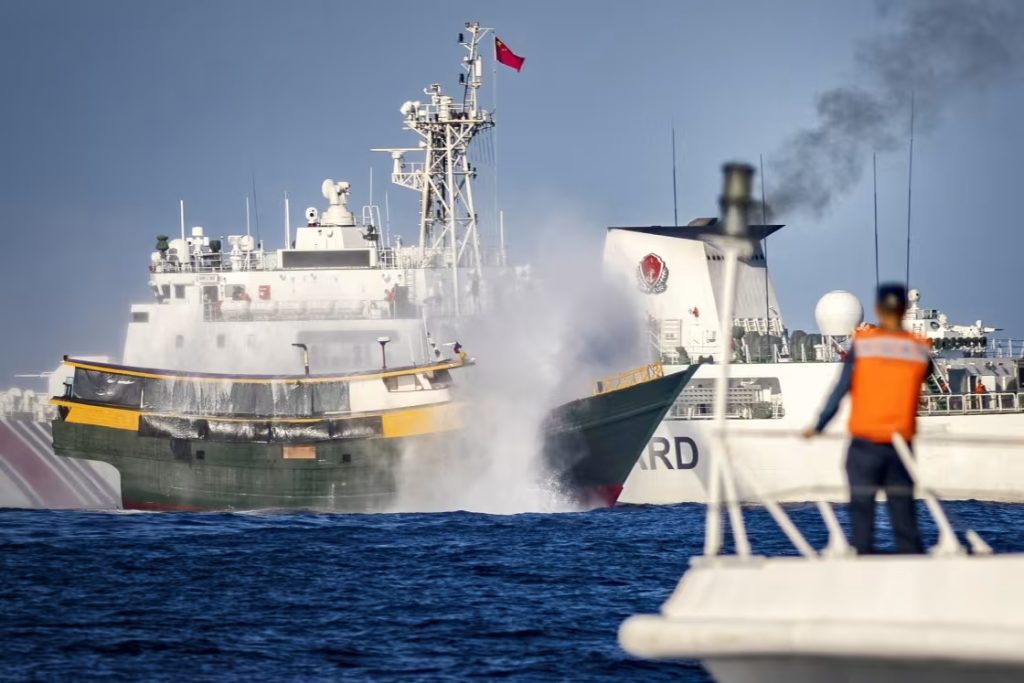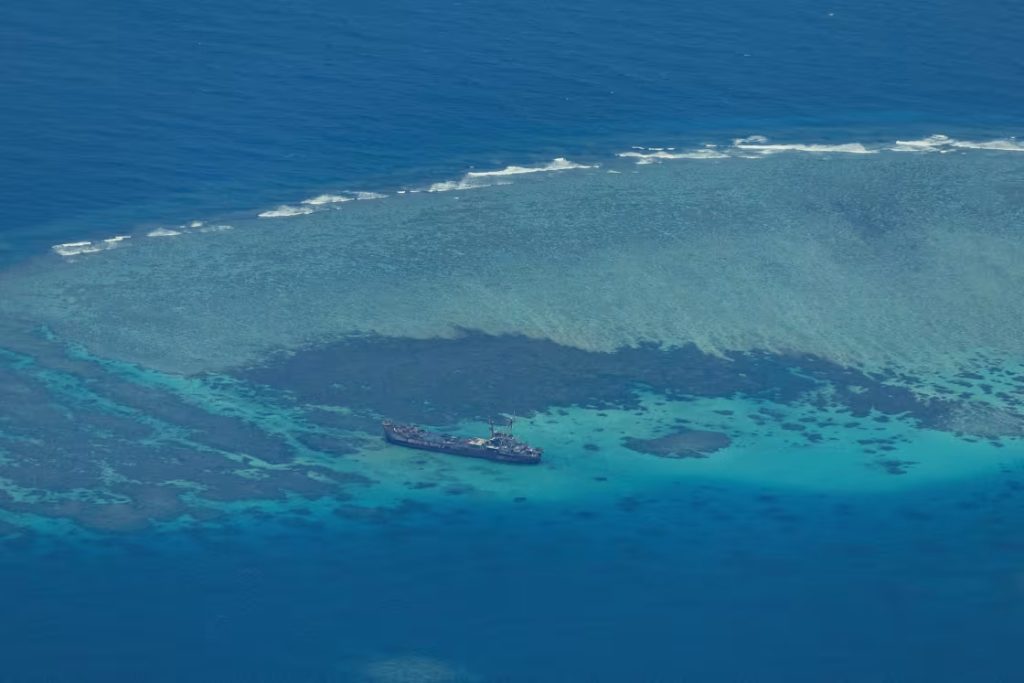HONG KONG — A prolonged dispute over uninhabited reefs is intensifying conflict between China and the Philippines, with potential implications for U.S. involvement.
The South China Sea, a strategically crucial area, has been the site of escalating maritime clashes between China and the Philippines. As a U.S. ally bound by a mutual defense treaty, any attack on the Philippines could invoke American military support.
The U.S. has condemned China’s actions in the region as “escalatory and irresponsible” and has reaffirmed its commitment to defend the Philippines against any aggression, including within the contested South China Sea, which Beijing claims almost entirely.
Control of the South China Sea is highly coveted due to its significance for global shipping, vital fishing resources, and substantial oil and gas reserves. Other nations, including Vietnam, Indonesia, Malaysia, Taiwan, and Brunei, also lay claim to parts of the sea.
In the latest incident, the Philippine military reported that earlier this month, two Chinese fighter jets dropped flares in the path of a Philippine military transport plane conducting a routine patrol over Scarborough Shoal. Manila described this as “dangerous and provocative,” marking the first time since President Ferdinand Marcos Jr. took office in 2022 that the Philippines has reported provocative actions by Chinese aircraft.
China, however, claimed the Philippine plane had illegally entered Chinese airspace despite multiple warnings.
The U.S. and other nations have also criticized what they describe as unsafe maneuvers by Chinese aircraft and ships in the South China Sea. China accuses the U.S. of threatening Chinese sovereignty and regional stability with its “close-in reconnaissance” operations by American vessels and aircraft.
Key Flashpoints

- Scarborough Shoal: This mostly submerged atoll, rich in fish stocks, has been occupied by Chinese Coast Guard and fishing boats for over a decade, despite being within the Philippines’ exclusive economic zone.
- Second Thomas Shoal: This area has been a source of tension due to the Philippines’ efforts to resupply the Sierra Madre, a World War II-era warship deliberately grounded in 1999 to assert territorial claims. China has objected to the resupply missions, particularly when they involve construction materials that could strengthen the vessel.
Recent tensions have surged over the Second Thomas Shoal, with China accused of using more aggressive tactics to block resupply missions, including water cannons and military-grade lasers. On June 15, new rules came into effect allowing the Chinese Coast Guard to use lethal force against foreign ships in Beijing-claimed waters.
Two days later, a confrontation between Chinese Coast Guard and Philippine vessels resulted in injuries to eight Filipino sailors and damage to their boats, which were carrying weapons and supplies. China argued that the Philippine vessels had entered its waters illegally, and its actions were justified.
In July, the two countries reached a provisional agreement aimed at preventing similar incidents around the Second Thomas Shoal, although details of the agreement remain undisclosed.
Experts note that tensions have slightly eased since the agreement, with the Philippines recently completing an unimpeded resupply mission to the Sierra Madre. Nevertheless, the core dispute remains unresolved, and the situation continues to be precarious.

International Response
Philippine Defense Secretary Gilberto Teodoro has asserted that there is “no international support whatsoever” for China’s claims in the South China Sea. In 2016, an international tribunal in The Hague ruled against Beijing’s claims, a decision China has consistently rejected.
Teodoro criticized China’s position, stating, “All they have on their side is brute force and strength and might.”
In response, Manila has sought to bolster international backing for its maritime claims by strengthening security alliances with the U.S., Japan, Australia, and other nations. Last month, the U.S. committed $500 million in military aid during visits to Manila by Secretary of State Antony Blinken and Defense Secretary Lloyd Austin. This funding was described as “unprecedented” and intended to clearly signal support for the Philippines.
China has reacted to this aid by accusing the U.S. of “stirring up trouble.”
President Ferdinand Marcos, who has aligned the Philippines more closely with the U.S. compared to his predecessor Rodrigo Duterte’s pro-China stance, has downplayed the likelihood of direct U.S. involvement in the maritime disputes. Nonetheless, a fatal incident involving Filipinos could potentially trigger the U.S.-Philippine mutual defense pact, a scenario both Washington and Beijing wish to avoid.
An armed conflict in the South China Sea would be particularly unwelcome for the U.S., which is already engaged in conflicts in Ukraine and the Middle East. As Susannah Patton from the Lowy Institute notes, “The U.S. is overextended and does not want to go to war with China, especially not in the South China Sea.”

